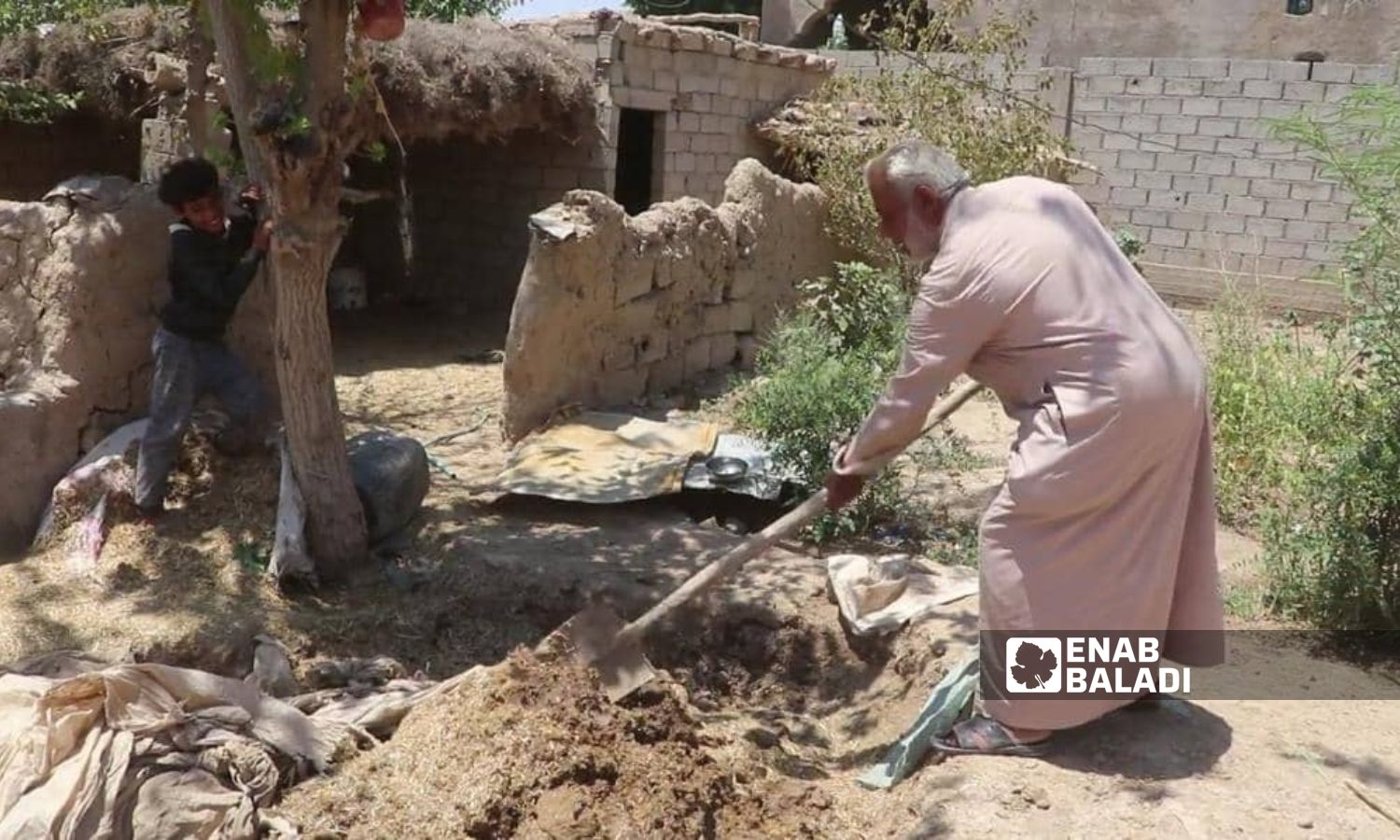



Deir Ezzor – Obadah al-Sheikh
Clay tandoor oven making is one of the traditional and inherited handcrafts in rural Deir Ezzor and a source of livelihood for many families. This craft continues to thrive today.
The clay tandoor oven is not just used for baking bread. Different types are used for making “mandi,” and there is a small type called “al-wawi” used for cooking and heating water during winter.
In addition to homemade tandoor bread ovens, there are shops that sell them, primarily catering to restaurant owners.
Mohammed al-Hassan, in his fifties, from the town of Abu Hardoub in eastern Deir Ezzor, has been working with his family in making clay ovens for years. He has relied on this craft as a source of income, inherited from his ancestors, for more than 35 years.
Al-Hassan brings red soil to produce the ovens and mixes it with straw. He then ferments the clay for up to two days before starting work on the oven in several stages.
He waits until the clay holds together, shaping it into a circular oven, then leaves it for two days until it is ready for sale.
Al-Hassan transports the ovens to neighboring villages and towns for sale, with prices ranging from 30,000 Syrian pounds to 50,000 (three US dollars).
Al-Hassan believes the price is low and unsuitable compared to the effort required to make the oven, but the poor economic conditions of the locals compel him to sell at this price.
There is an age-old relationship between the rural and even urban residents of Deir Ezzor and the clay tandoor oven. It has historically been a staple piece in every household, considered a popular heritage, and still present in many homes. The craft is not confined to men.
Sixty-year-old Mariam al-Shatti from the village of al-Hari in rural al-Bukamal inherited the craft of tandoor oven-making from her mother. Her family continues this profession, creating ovens in various sizes ranging from 40 to 90 centimeters, depending on demand.
Al-Shatti told Enab Baladi that making ovens is a good source of income for her, especially since it doesn’t require significant capital, only straw, water, and red soil.
According to al-Shatti, the process begins by bringing a quantity of red soil from the outskirts of the town, where specific soil for clay oven-making is found. The soil is then sieved and cleaned from stones before being mixed with straw and water for fermentation.
When the clay is ready, al-Shatti can produce one oven per day, occasionally finishing two, and sells them from her home for 75,000 Syrian pounds.
This craftsmanship is a source of income for al-Shatti’s family. She stated to Enab Baladi that she inherited it from her family, and locals come to her home to buy the tandoor ovens due to their high quality.
Al-Shatti considers oven-making a demanding job that requires time and focus, pointing out that it is a difficult task but continues doing it because it is the family’s income source.
Many traditional crafts are still practiced in Deir Ezzor today, such as making reeds mats, which remains a prominent summer job for many. These crafts provide families with income, as workers earn 25,000 Syrian pounds daily despite long working hours. The region suffers from economic decline and decreased purchasing power amid the deteriorating exchange rate of the Syrian pound against the US dollar (one dollar equals 15,000 Syrian pounds).
if you think the article contain wrong information or you have additional details Send Correction